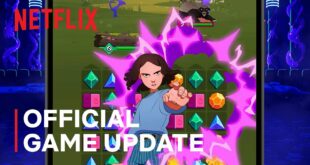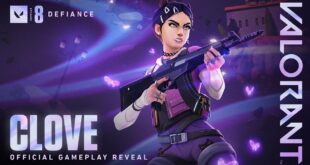The original Vampire The Masquerade: Bloodlines remains a cult classic, particularly given the sterling work put in by fans to fix the initially broken release build. Taking the tabletop RPG and its massive backstory and lore, Bloodlines offered perhaps the best attempt to make the player feel like a vampire. The upcoming sequel Bloodlines 2 is one of my most anticipated titles so I was really excited to appease the hunger by taking a look at Coteries of New York. Somewhat confusingly, this vampiric take on the visual novel is not connected to Bloodlines, being developed by Polish studio, Draw Distance. Despite these vagaries of licensing though, Coteries offers a fantastic introduction to the wider context and lore of The Masquerade.
In true Masquerade fashion, Coteries focuses on the initial efforts of a fledgling vampire to adjust to the infernal politics of undead existence. Fortunately for newcomers to the world of the Masquerade, a helpful glossary provides extra detail on much of the specific vocabulary. This updates dynamically as you proceed so you can always look up further details as you wish without having to trawl through a huge pile of information. It’s particularly welcome as the game is deliberately written without excessive exposition.
As a visual novel, the aesthetics of the game may not seem to be important but the static backgrounds are nicely evocative, watercolour takes on New York landscapes. These do sometimes feel a little repetitive though, particularly the alleyway background that stands in for several illicit locations throughout the game. Character likenesses, also static, are clearly distinctive and share the aesthetics of the original card game. This means that vampires have a range of appearances and types. These vary from classic black-clad Dracula types to tracksuit wearing townies. This variety is part of the appeal of the tabletop as vampires can represent a multitude of character types.

As a traditional visual novel, the gameplay involves choosing dialogue options to follow branching narratives. Your first choice is to select your vampire clan. This opening limits you to a choice from three of the more normal clans, Toreador, Brujah, or Ventrue. Each clan has access to some different skills that can be activated through the dialogue options. My playthrough saw me as a bohemian Toreador with access to superhuman speed and powers of persuasion. This choice may sound restrictive but allows for the game to offer the more esoteric clans as potential allies. I imagine this was a necessary development choice as the more anarchic types like the Malkavians or Gangrels just wouldn’t fit the central narrative options.
Upon choosing your clan and facing the true horrors of your new unlife, Coteries opens up to provide a welcome degree of paths. Your central mission is to recruit followers to assist you in the main narrative, whilst managing your hunger and serving the competing elders who command you. The result is a well-judged balance of politics, feeding, and recruitment that all feels perfectly pitched for the urban – and urbane – world of The Masquerade. This means that feeding has to be done subtly and safely so some optional meals cause problems while using your powers too much risks unleashing the feral Beast of bloodlust. Some optional dialogue depends on your success in managing this Hunger offering up more potential for replayability.

As mentioned above, recruiting followers to form the titular Coterie is one of the main gameplay aspects, and this leads to another set of choices. This also introduces the less human clans to the game. Insane Malkavians, bestial Gangrels, rat-like Nosferatu and blood-sorceror Tremeres all have representatives who you can attempt to recruit. This recruitment system requires you to devote several nights (of the 16 available in-game) to complete their sub-quests. This is another way in which the game can reward replayability without devolving into total repetition. Some sub-quests have more fail options than others so it is entirely possible to find yourself devoid of followers by the climactic ending of the central quest.
Visual novels live or die through the quality of their writing and the branching options provided. Fortunately, Coteries has benefited from the well-established lore and world of its source material and feels like a real extended part of that universe. The glossary allows for a newcomer to enjoy the narrative without boring current fans with repeating basic world details, whilet the cast of characters are all flawed enough to be interesting and worthwhile options. There is consequently less of a right or wrong answer or simple moral system to work within. While the central narrative develops throughout the game’s playing time, the effects feel more concrete than the Telltale formula that has clearly also influenced Draw Distance.
This Article was first published onSource link . We are just re-posting and re-sharing from their RSS feed.
More Gaming Stories
 Epic Heroes Entertainment Movies Toys TV Video Games News Art Pop culture news goodness
Epic Heroes Entertainment Movies Toys TV Video Games News Art Pop culture news goodness




